Name Billy Powell Children 5 | Nickname(s) Billy Powell | |
 | ||
Parents Molly Coppinger & William Powell Similar People Wild Cat, George Catlin, Thomas Jesup, Billy Bowlegs, Andrew Jackson | ||
Osceola malax
Osceola (1804 – January 30, 1838), born as Billy Powell, became an influential leader of the Seminole in Florida. Of mixed parentage, Creek, Scots-Irish, black, and English, he was raised as a Creek by his mother, as the tribe had a matrilineal kinship system. They migrated to Florida when he was a child, with other Red Stick refugees, after their defeat in 1814 in the Creek Wars.
Contents
- Osceola malax
- Osceola don t tase me bro
- Early life
- 1830s resistance and war leader
- Capture
- Legacy and honors
- Legacy and descendants
- Relics
- Literature
- Film
- TV
- Music
- Sports
- Art
- References
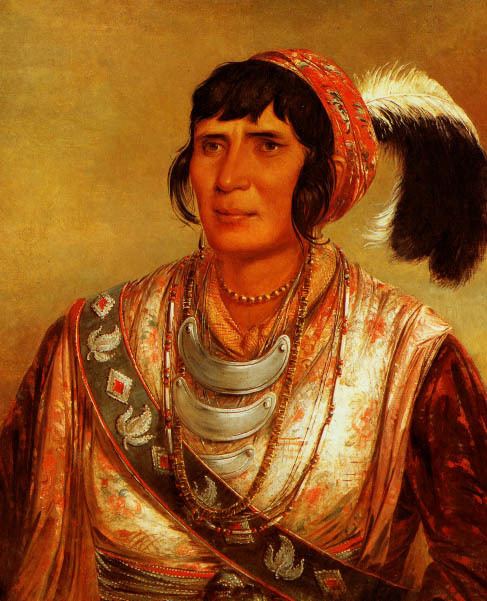
In 1836, Osceola led a small group of warriors in the Seminole resistance during the Second Seminole War, when the United States tried to remove the tribe from their lands in Florida. He became an adviser to Micanopy, the principal chief of the Seminole from 1825 to 1849. Osceola led the war resistance until he was captured in September 1837 by deception, under a flag of truce, when he went to a meeting spot near Fort Peyton for peace talks. Because of his renown, Osceola attracted visitors as well as leading portrait painters. He died a few months later in prison at Fort Moultrie in Charleston, South Carolina, of causes reported as an internal infection or malaria.
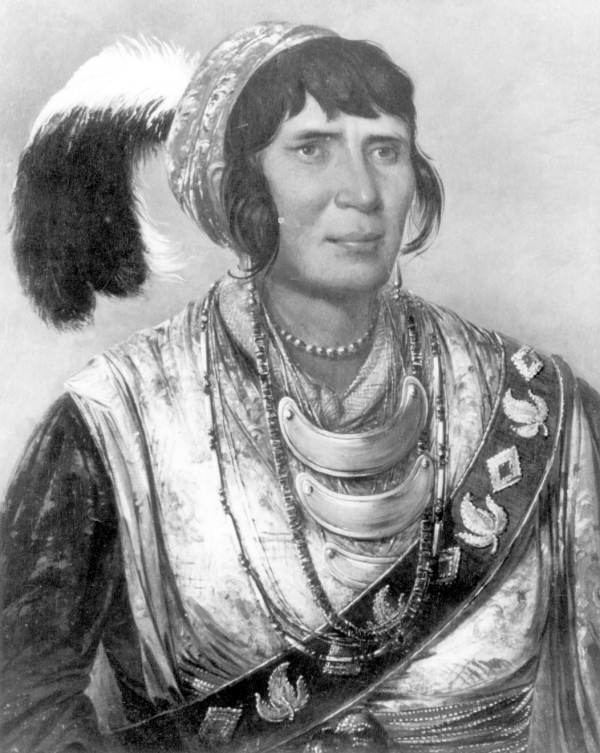
Osceola don t tase me bro
Early life
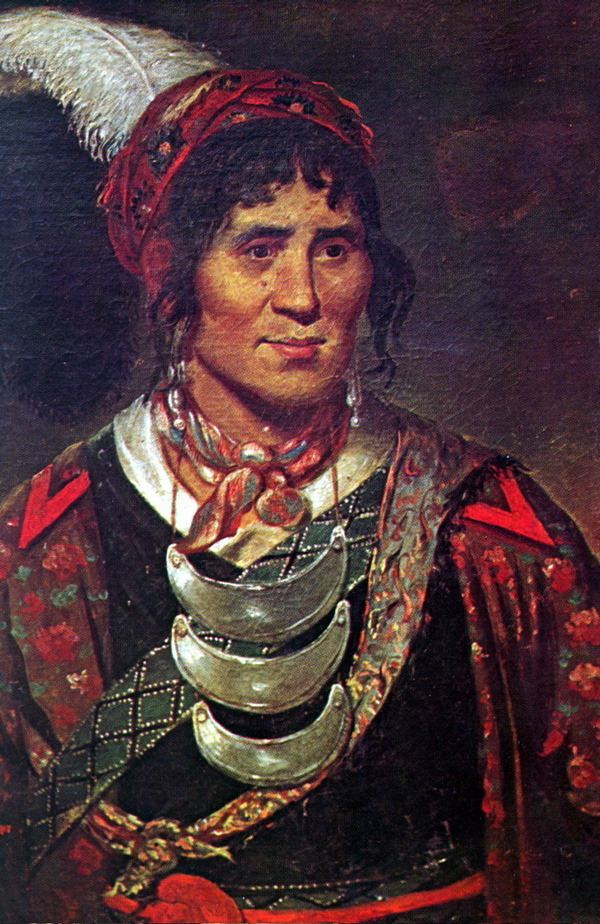
Osceola was named Billy Powell at birth in 1804 in the Creek village of Talisi. now known as Tallassee, Alabama, in current Elmore County. "The people in the town of Tallassee...were mixed-blood Native American/English/Irish/Scottish, and some were black. Billy was all of these." His mother was Polly Coppinger, a Creek woman, and his father was William Powell, a British trader with a Welsh surname. Polly was the daughter of Ann McQueen and Jose Coppinger. Because the Creek have a matrilineal kinship system, Polly and Ann's other children were all considered to be born into their mother's clan; they were reared as traditional Creek and gained their status from their mother's people. Ann McQueen was also mixed-race Creek; her father, James McQueen, was Scots-Irish. Ann was probably the sister or aunt of Peter McQueen, a prominent Creek leader and warrior. Like his mother, Billy was raised in the Creek tribe.
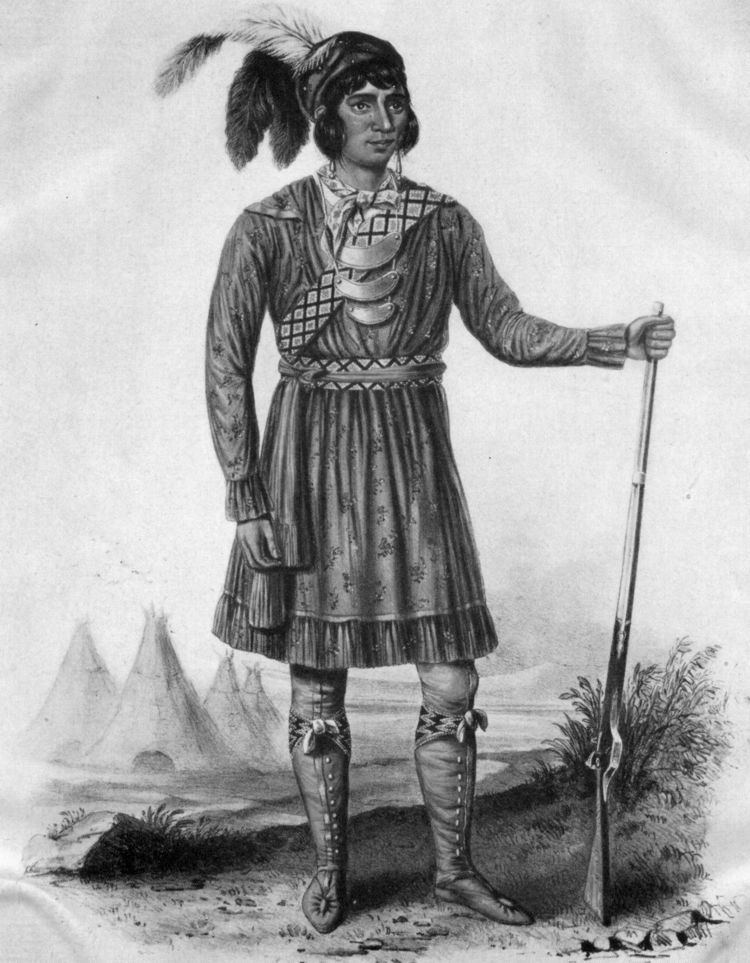
Like his father, Billy's maternal grandfather James McQueen was also a trader; in 1714 he was the first European to trade with the Creek in Alabama. He stayed in the area as a fur trader and married into the Creek tribe and became closely involved with this people. He is buried in the Indian cemetery in Franklin, Alabama, near a Methodist Missionary Church for the Creek.
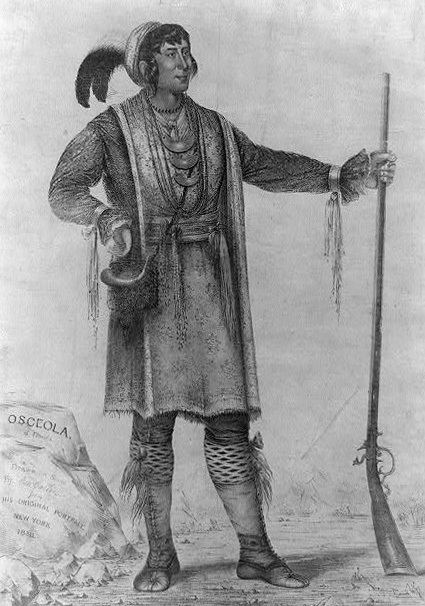
In 1814, after the Red Stick Creek were defeated by United States forces, Polly took Osceola and moved with other Creek refugees from Alabama to Florida, where they joined the Seminole. In adulthood, as part of the Seminole, Powell was given his name Osceola ( or ). This is an anglicized form of the Creek Asi-yahola (pronounced [asːi jahoːla]); the combination of asi, the ceremonial black drink made from the yaupon holly, and yahola, meaning "shout" or "shouter".
In 1821, the United States acquired Florida from Spain. More European-American settlers started moving in, encroaching on the Seminole. After early military skirmishes and the 1823 Treaty of Moultrie Creek, by which the US seized the northern Seminole lands, Osceola and his family moved with the Seminole deeper into central and southern Florida.
As an adult, Osceola took two wives, as did some other Creek and Seminole leaders. With them, he had at least five children. One of his wives was an African American, and he fiercely opposed the enslavement of free people.
1830s resistance and war leader
Through the 1820s and the turn of the decade, American settlers kept up pressure on the US government to remove the Seminole from Florida to make way for their desired agricultural development. In 1832, a few Seminole chiefs signed the Treaty of Payne's Landing, by which they agreed to give up their Florida lands in exchange for lands west of the Mississippi River in Indian Territory. According to legend, Osceola stabbed the treaty with his knife, although there are no contemporary reports of this.
Five of the most important Seminole chiefs, including Micanopy of the Alachua Seminole, did not agree to removal. In retaliation, the US Indian agent, Wiley Thompson, declared that those chiefs were deposed from their positions. As US relations with the Seminole deteriorated, Thompson forbade the sale of guns and ammunition to them. Osceola, a young warrior rising to prominence, resented this ban. He felt it equated the Seminole with slaves, who were forbidden to carry arms.
Thompson considered Osceola to be a friend and gave him a rifle. Later, though, when Osceola quarreled with Thompson, the agent had the warrior locked up at Fort King for a night. The next day, to secure his release, Osceola agreed to abide by the Treaty of Payne's Landing and to bring his followers into the fort.
On December 28, 1835, Osceola and his followers ambushed and killed Wiley Thompson and six others outside Fort King, while another group of Seminole ambushed and killed a column of US Army troops marching from Fort Brooke to Fort King, in what Americans called the Dade Massacre. These nearly simultaneous attacks began the Second Seminole War.
Capture
In October 1837, on the orders of General Thomas Jesup, Osceola was captured when he went for peace talks near St. Augustine, Florida. He was initially imprisoned at Fort Marion before being transferred to Fort Moultrie on Sullivans Island, outside Charleston, South Carolina. Osceola's capture by deceit caused a national uproar. General Jesup and the administration were condemned by many congressional leaders. That December, Osceola and other Seminole prisoners were moved to Fort Moultrie, Charleston, South Carolina. They were visited by townspeople.
George Catlin and other prominent painters met the war chief and persuaded him to allow his picture to be painted. Robert J. Curtis painted an oil portrait of Osceola as well. These paintings have inspired numerous prints and engravings, which were widely distributed, and even cigar store figures.
Osceola died of quinsy (though one source gives the cause of death as "malaria" without further elaboration) on January 30, 1838, three months after his capture. He was buried with military honors at Fort Moultrie.
Legacy and honors
Legacy and descendants
Relics
After Osceola's death, army doctor Frederick Weedon persuaded the Seminole to allow him to make a death mask of Osceola, this being a European-American custom at the time for prominent people. Later he removed Osceola's head and embalmed it. For some time, Weedon kept the head and a number of personal objects Osceola had given him. Later, Weedon gave the head to his son-in-law Daniel Whitehurst. In 1843, Whitehurst sent the head to Valentine Mott, a New York physician. Mott placed it in his collection at the Surgical and Pathological Museum. It was presumably lost when a fire destroyed the museum in 1866. Some of Osceola's belongings are still held by the Weedon family, while others have disappeared.
Captain Pitcairn Morrison sent the death mask and some other objects collected by Weedon to an army officer in Washington. By 1885, the death mask and some of Osceola's belongings had arrived in the anthropology collection of the Smithsonian Institution, where they are still held.
In 1966, Miami businessman Otis W. Shriver claimed he had dug up Osceola's grave and put his bones into a bank vault to rebury them at a tourist site at the Rainbow Springs. Shriver traveled around the state in 1967 to gather support for his project. Archaeologists later proved that Shriver had dug up animal remains; Osceola's body was still in its coffin.
In 1979 the Seminole Nation of Oklahoma bought Osceola's bandolier and other personal items from a Sotheby's auction. Because of the chief's significance, over time some people have created forgeries of Osceola's belongings. Rumors persist that his embalmed head has been found in various locations.
Literature
Film
TV
When the army attempts to move the Seminole Indians from their own lands to a tract that is much less desirable, Jim steps in on their behalf. [IMDB] Osceola played by Abel Fernandez.
